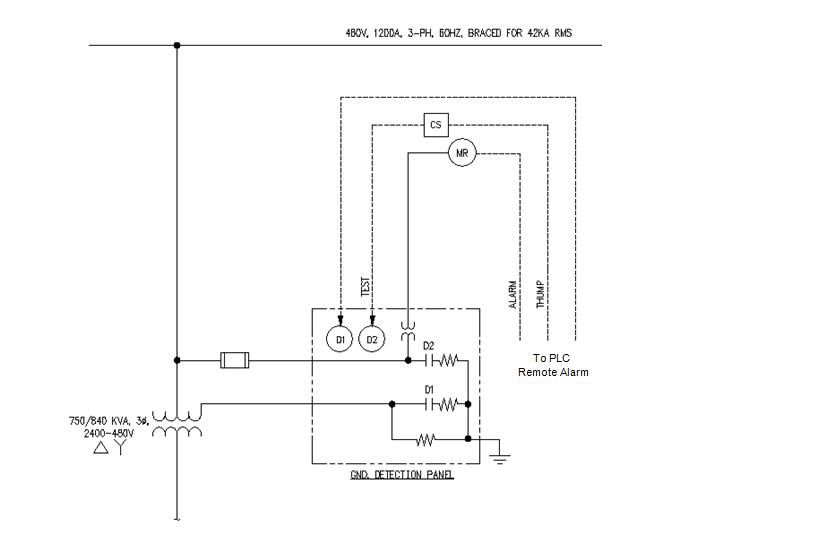I recently got chance to work with various ground detection circuits. I have a Delta-Wye transformer as shown in the schematic below with wye ungrounded. Could someone explain how this circuit work and what each component does? In the MCC, I have seenthe gnd detection has meter relay (I assume that's the MR) with "Thumper-OFF-Test" poisition switches.



